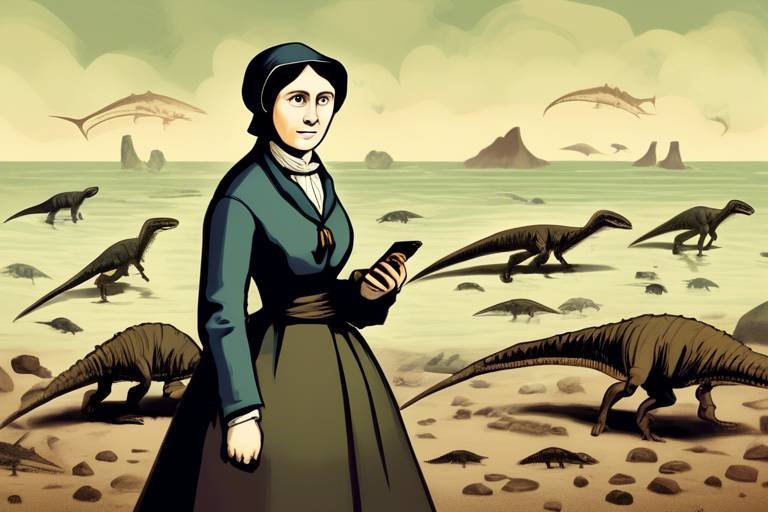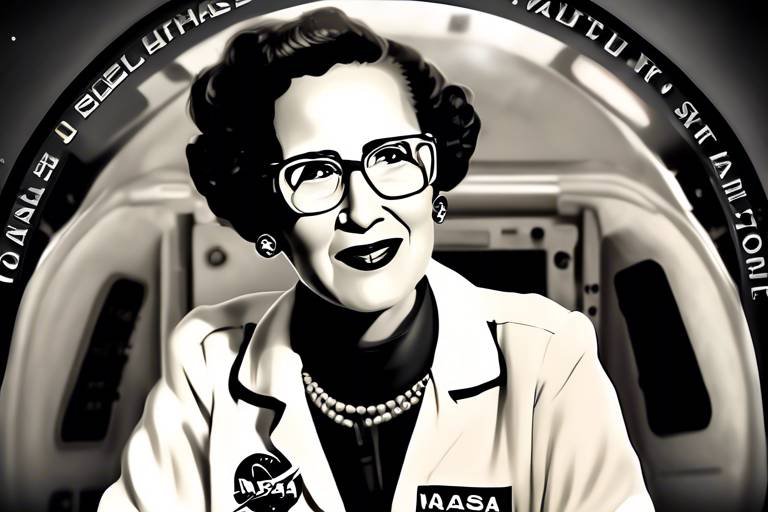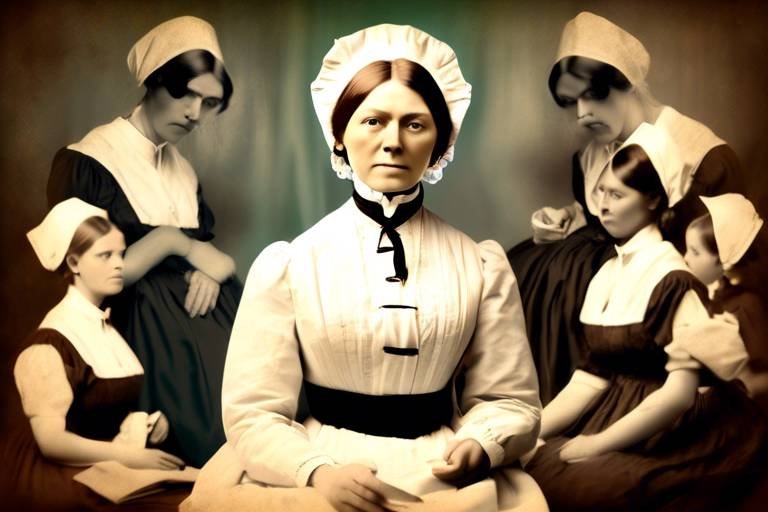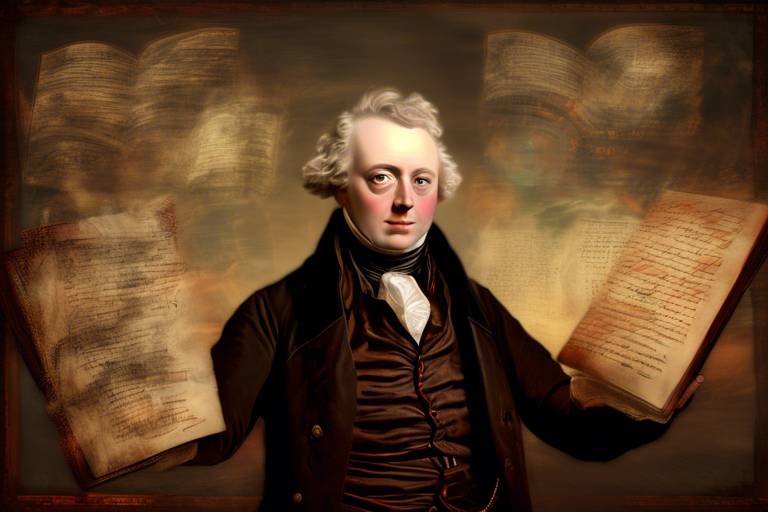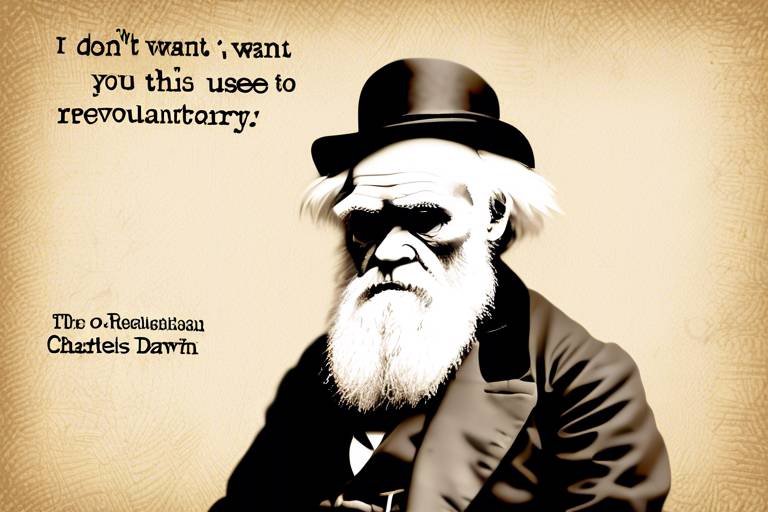The Work of Mary Anning in Paleontology
Mary Anning was not just a name in the annals of paleontology; she was a trailblazer whose discoveries reshaped our understanding of prehistoric life. Born in 1799 in Lyme Regis, England, Anning's passion for fossils blossomed at a time when women were largely excluded from scientific discourse. Despite the societal constraints of her era, she ventured into the rugged cliffs of the Jurassic Coast, unearthing treasures that would astonish the scientific community. Her work laid the groundwork for modern paleontological studies, and her discoveries continue to influence the field today.
Imagine walking along a beautiful coastline, the salty breeze brushing past you, and the sound of waves crashing against the rocks. Now, picture yourself uncovering ancient relics hidden beneath layers of earth, remnants of creatures that roamed the seas millions of years ago. This was the reality for Mary Anning. From a young age, she was captivated by the idea that these fossils were not just rocks, but stories waiting to be told. Her relentless spirit and keen eye for detail led her to make significant contributions that would eventually earn her a rightful place in the history of science.
Anning's discoveries were not merely about the fossils themselves; they were gateways to understanding the evolution of life on Earth. She was the first to identify several species, including the iconic ichthyosaur and plesiosaur, which opened up new avenues of research. Her ability to meticulously piece together these ancient skeletons revealed a world that was as fascinating as it was mysterious. Through her work, she challenged the prevailing notions of her time and laid the foundation for future paleontologists to build upon.
In a world where recognition often eluded women, Anning's story is one of perseverance and triumph. She faced numerous obstacles, including skepticism from the scientific community, primarily due to her gender. Yet, her passion and dedication to her craft shone through, allowing her to break through the barriers that sought to confine her. Today, as we look back on her contributions, we recognize that Mary Anning's work was not just about fossils; it was about challenging the status quo and paving the way for future generations of scientists.
As we delve deeper into her life and work, we discover not just the fossils, but the legacy of a woman who dared to defy the odds. Mary Anning's journey is a testament to the power of curiosity and the importance of following one's passion, no matter the challenges that lie ahead. Her story inspires us to look beyond the surface, to seek out the hidden treasures that lie within our own lives, and to remember that every discovery has the potential to change the world.
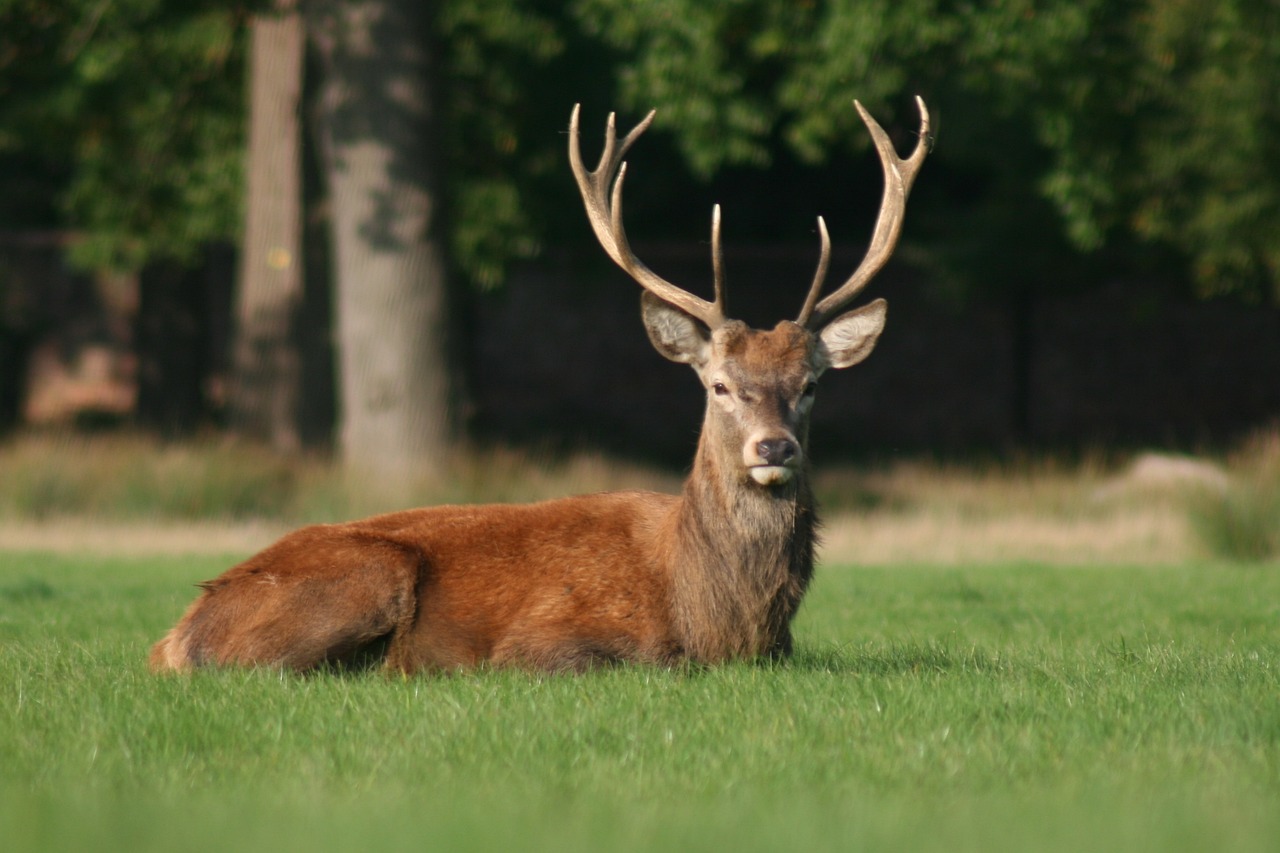
Early Life and Influences
Mary Anning was born on May 21, 1799, in the coastal town of Lyme Regis, England, a place that would play a pivotal role in her life and career. Growing up in a family that struggled with financial difficulties, Mary was the daughter of a cabinetmaker who had a passion for fossil hunting. Her father, Richard Anning, introduced her to the world of fossils, which was a common pastime in Lyme Regis due to its rich geological history. This early exposure to the fossil-rich cliffs of the Jurassic Coast ignited a spark in Mary that would lead her to become one of the most significant figures in paleontology.
Despite the challenges of her modest upbringing, Mary was determined to pursue her passion. The death of her father when she was just 11 years old forced her to take on more responsibilities, including helping her mother sell fossils to support the family. It was during these formative years that Mary honed her skills in fossil preparation and identification, often working alongside her brother, Joseph. The duo would scour the beaches and cliffs, searching for remnants of ancient life, which was both a means of survival and a source of wonder for young Mary.
Mary's education was informal, but she was an avid learner. She absorbed knowledge from books, local scholars, and the natural world around her. The influence of her surroundings—the rugged coastlines, the fossil beds, and the vibrant community of fossil collectors—shaped her understanding of geology and paleontology. Mary was particularly inspired by the works of contemporary scientists, including Georges Cuvier, who was pivotal in the establishment of paleontology as a scientific discipline. His theories on extinction deeply resonated with her as she began to piece together the stories that fossils could tell about the Earth’s distant past.
As a woman in the early 19th century, Mary faced significant barriers in a male-dominated field. However, her tenacity and passion for paleontology allowed her to break through some of these societal constraints. She became a fixture in the scientific community, often engaging with notable figures who would visit Lyme Regis to learn from her. This interaction with scientists not only validated her work but also fueled her desire to contribute to the burgeoning field of paleontology.
In summary, Mary Anning's early life was marked by a unique combination of hardship and opportunity. Her upbringing in Lyme Regis, coupled with her innate curiosity and determination, set the stage for her groundbreaking contributions to paleontology. It’s a testament to how passion can flourish even in the most challenging circumstances, ultimately allowing one to make an indelible mark on the world.
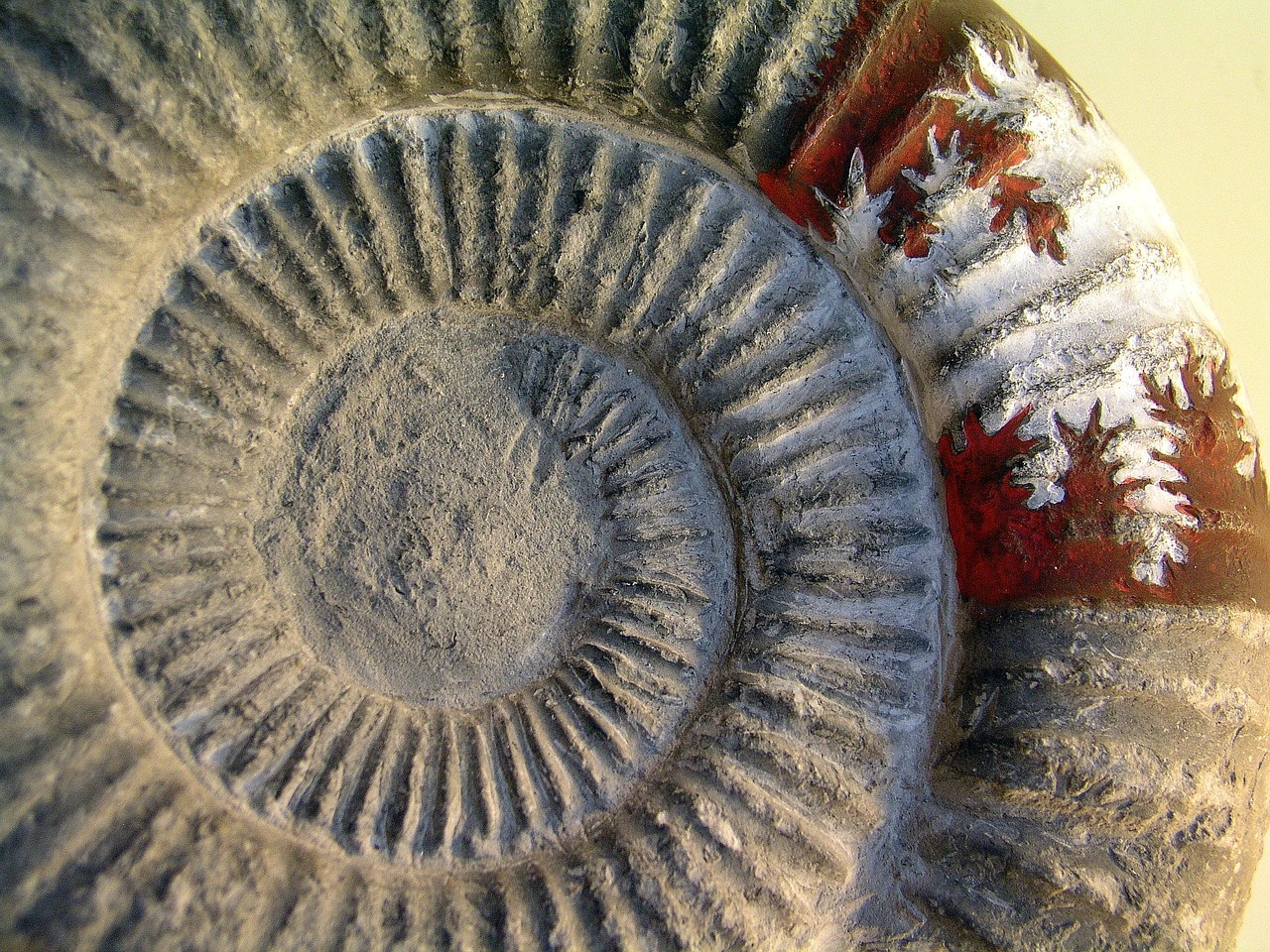
Key Discoveries
Mary Anning's contributions to paleontology are nothing short of revolutionary. Her discoveries, particularly those of the ichthyosaur and the plesiosaur, not only expanded the scientific community's understanding of prehistoric marine life but also paved the way for future research in the field. Imagine walking along the Jurassic Coast of Lyme Regis, where the waves crash against the cliffs, and the ground is littered with ancient secrets waiting to be uncovered. This was Anning's playground, a place where she would go on to make some of the most significant fossil discoveries of her time.
In a world where women were often relegated to the sidelines, Anning took center stage through sheer determination and remarkable skill. Her keen eye for detail and her ability to identify fossils in the rocky cliffs made her a formidable figure in paleontology. Each fossil she unearthed was like a key, unlocking the door to a past filled with creatures that roamed the Earth millions of years ago. The impact of her work was profound, shifting the paradigm of how scientists viewed the timeline of life on Earth.
Among her most notable finds was the ichthyosaur, a marine reptile that resembled a dolphin but was, in fact, a distant relative of modern reptiles. Discovered in 1811, the ichthyosaur's skeleton was a game-changer. It was the first complete fossil of its kind, and its discovery helped to illustrate that the Earth was home to creatures far more diverse and complex than anyone had previously imagined. Anning meticulously documented the ichthyosaur's anatomy, providing valuable insights into its structure and lifestyle, which would later inform the scientific community about the evolution of marine reptiles.
Then came the plesiosaur, discovered in 1823, which further solidified Anning's reputation as a leading paleontologist. The plesiosaur was characterized by its long neck and large body, resembling a creature straight out of a mythological tale. Anning's find was significant not only because it was the first complete plesiosaur skeleton ever discovered but also because it challenged existing notions about the diversity of life in prehistoric oceans. The implications of her discoveries were vast, prompting scientists to reconsider the evolutionary relationships between various species.
To give you a clearer picture of her key discoveries, here's a brief summary:
| Discovery | Year | Significance |
|---|---|---|
| Ichthyosaur | 1811 | First complete skeleton of a large marine reptile, reshaping views on prehistoric life. |
| Plesiosaur | 1823 | First complete plesiosaur skeleton, challenging existing evolutionary theories. |
Mary Anning’s discoveries did not just add fossils to the scientific record; they fundamentally altered the understanding of life’s history on Earth. Her findings sparked debates and discussions that would lead to further explorations and discoveries in the field of paleontology. It’s hard to overstate the impact of her work, especially when considering the obstacles she faced as a woman in a male-dominated field. Yet, her passion for paleontology and her unwavering commitment to her work ensured that her discoveries would not be forgotten.
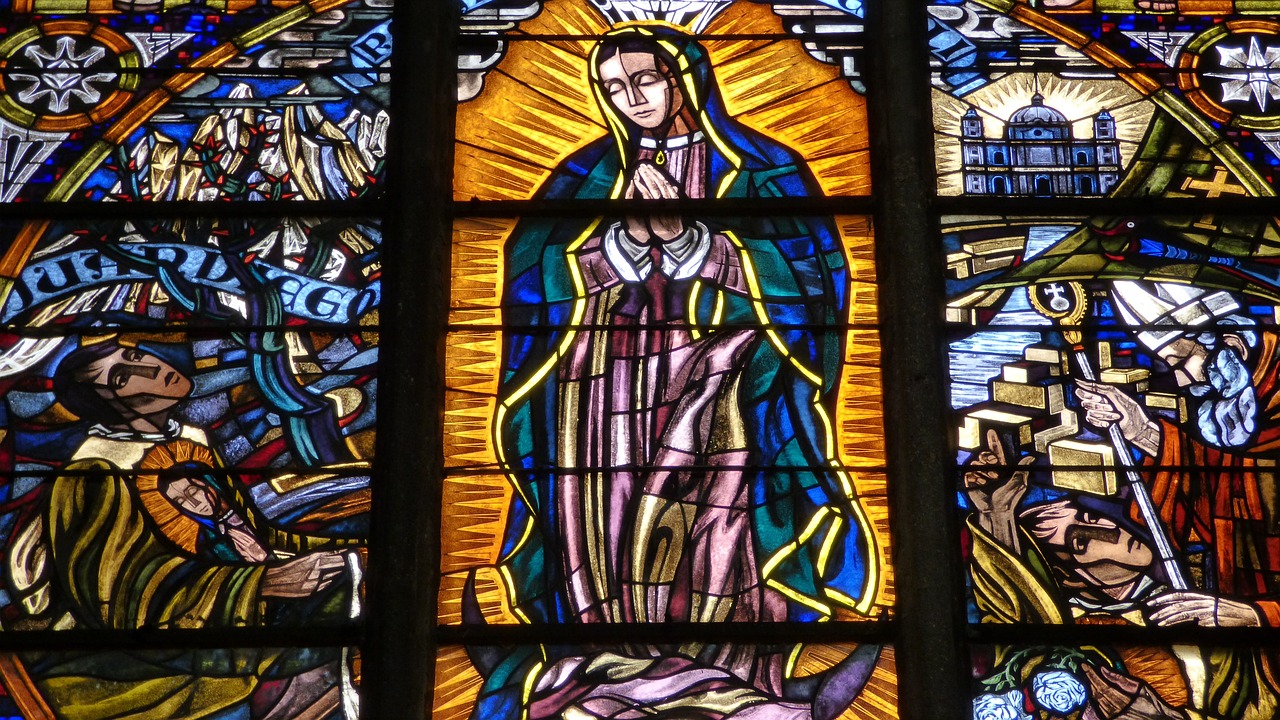
Ichthyosaur Discovery
The year was 1811, a time when the world was beginning to awaken to the wonders of paleontology, and yet, few could have predicted the monumental shift that was about to occur. Mary Anning, a young woman from the coastal town of Lyme Regis in England, was about to make a discovery that would leave an indelible mark on the field of paleontology. While many of her contemporaries were still grappling with the concept of extinction, Anning was out there on the Jurassic Coast, digging through the cliffs and sands, uncovering the secrets of a long-lost world.
On that fateful day, Anning unearthed the first complete ichthyosaur skeleton, a creature that resembled a modern dolphin but was, in fact, a marine reptile that thrived during the Mesozoic era. This find was groundbreaking, not just for its size but for what it represented. It was the first time that evidence of such a large marine reptile had been discovered, challenging existing notions of prehistoric life. Imagine the excitement she must have felt as she brushed away the sand to reveal the fossilized bones, each piece a puzzle that would help reconstruct a story that had been buried for millions of years!
The ichthyosaur, with its elongated body and strikingly large eyes, was unlike anything the scientific community had encountered before. Anning's meticulous work in excavating the skeleton allowed her to present a complete picture of this ancient creature. Not only did she collect the bones, but she also observed and documented their arrangement, providing invaluable insights into the ichthyosaur's anatomy and lifestyle. Her findings sparked a wave of interest and inquiry into the nature of these prehistoric marine reptiles, as scientists began to realize that the Earth was home to a rich tapestry of life forms that had long since vanished.
However, the path to recognition was not smooth. Despite her groundbreaking discovery, Anning faced significant challenges. The scientific community was predominantly male, and her gender often led to skepticism regarding her findings. Many of the prominent scientists of the time were reluctant to accept the work of a woman, especially one who had not received formal education. But Anning's passion and dedication to her craft shone through, and slowly but surely, her contributions began to gain the attention they deserved.
In fact, the ichthyosaur discovery would go on to influence not just paleontology but also the broader field of geology. It provided a tangible link to the past, allowing scientists to piece together the evolutionary history of marine life. The implications were profound, leading to a deeper understanding of vertebrate evolution and the development of marine ecosystems.
To encapsulate the significance of Anning's ichthyosaur discovery, consider the following table that outlines its key aspects:
| Aspect | Details |
|---|---|
| Year of Discovery | 1811 |
| Location | Lyme Regis, England |
| Type of Fossil | Ichthyosaur Skeleton |
| Significance | First complete skeleton of a large marine reptile |
| Impact | Revolutionized understanding of prehistoric marine life |
In conclusion, the discovery of the ichthyosaur was not just a personal triumph for Mary Anning; it was a pivotal moment in the history of paleontology. It challenged existing beliefs, inspired future generations of scientists, and ultimately laid the groundwork for a deeper understanding of the evolution of life on Earth. Anning's story serves as a reminder that passion and perseverance can lead to remarkable discoveries, even in the face of adversity.

Significance of the Ichthyosaur
The discovery of the ichthyosaur was nothing short of revolutionary. Imagine a creature that swam through ancient seas, resembling a fish yet possessing the features of a reptile. This remarkable blend of characteristics not only captivated the imagination of the public but also provided profound insights into the evolution of marine life. The ichthyosaur, with its streamlined body and large eyes, showcased adaptations that hinted at a life perfectly suited for the ocean, demonstrating how reptiles could thrive in aquatic environments.
What makes the ichthyosaur particularly significant is the light it shed on the concept of vertebrate evolution. Prior to Anning's discovery, the understanding of prehistoric life was limited. The ichthyosaur's anatomy, including its long, slender limbs modified into flippers, challenged existing notions about how reptiles adapted to their surroundings. Anning's meticulous work in excavating and studying the skeleton allowed scientists to piece together the evolutionary puzzle, suggesting that reptiles had diversified into various ecological niches, including the vast oceans.
Furthermore, the ichthyosaur represented a key moment in the development of the field of paleontology. It was one of the first fossils that provided concrete evidence of large prehistoric reptiles, which helped to shift the scientific community's perspective on the types of creatures that once roamed the Earth. The implications of this discovery were monumental, as it paved the way for future research and exploration into the rich tapestry of prehistoric life.
To illustrate the significance of the ichthyosaur further, consider the following points:
- Evolutionary Insights: The ichthyosaur's features provided critical information about how reptiles adapted to marine life.
- Scientific Validation: Its discovery helped validate the idea that reptiles could inhabit a variety of environments, challenging previous assumptions.
- Inspiration for Future Research: Anning's work inspired other paleontologists to explore and study marine fossils, leading to further discoveries.
In essence, the ichthyosaur was not just a fossil; it was a gateway to understanding the complex history of life on Earth. Mary Anning’s dedication and passion in uncovering this extraordinary creature have left an indelible mark on the field of paleontology. Her contributions continue to resonate, inspiring new generations of scientists to delve deeper into the mysteries of our planet's prehistoric past.
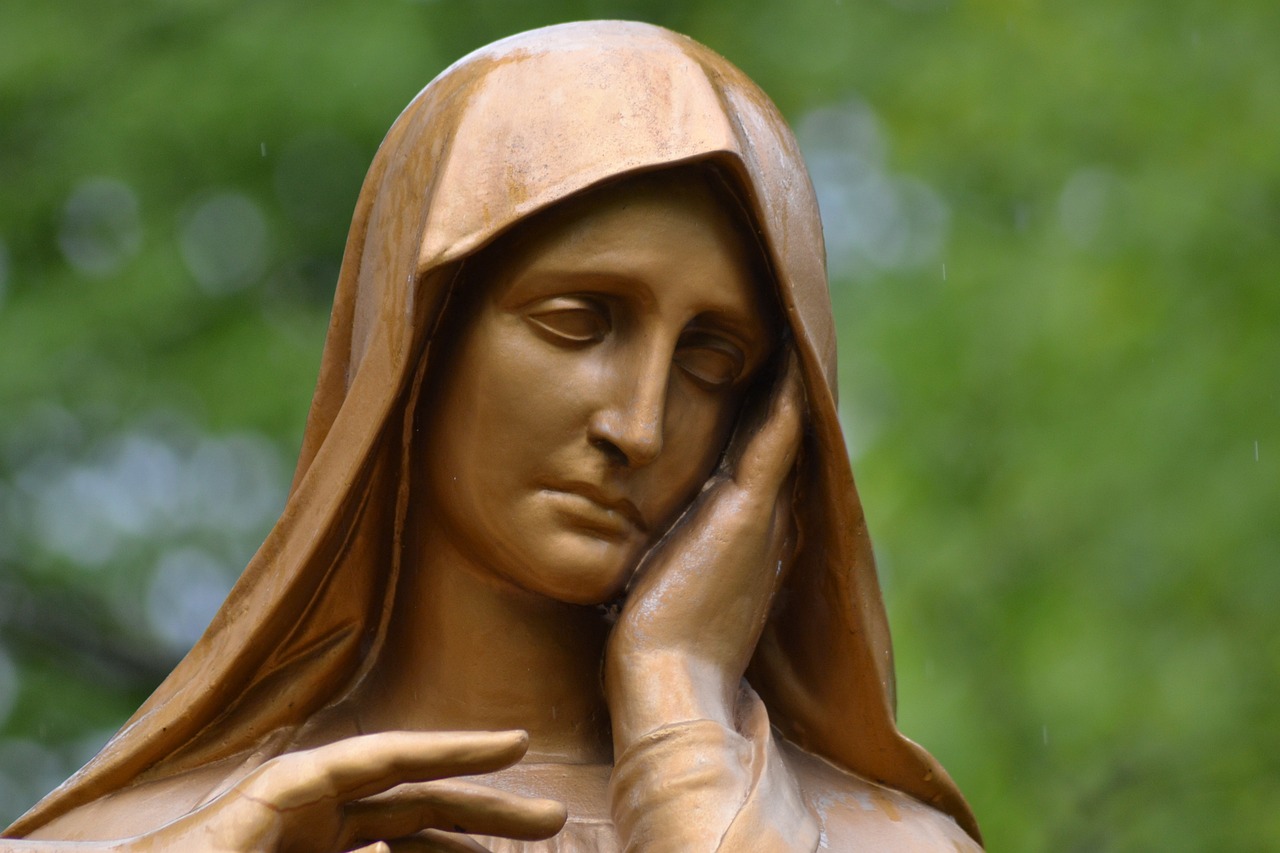
Scientific Reception
Mary Anning's journey in the scientific community was anything but smooth. Despite her groundbreaking discoveries, the of her work was marred by skepticism and resistance, largely due to the prevailing attitudes towards women in science during the early 19th century. Anning, a woman of humble beginnings, faced an uphill battle in a field dominated by men. Many of her contemporaries dismissed her findings, attributing them to luck rather than skill or knowledge. Can you imagine pouring your heart and soul into research only to have it disregarded because of your gender?
One of the most notable challenges Anning faced was gaining the respect of her male peers. Many prominent geologists and paleontologists, such as Richard Owen and Gideon Mantell, were initially hesitant to acknowledge her contributions. However, her meticulous work and undeniable discoveries gradually began to shift perceptions. It’s like being a hidden gem in a treasure trove; once discovered, the brilliance shines through, and the world can’t help but take notice.
In the context of her time, Anning's achievements were revolutionary. She unearthed fossils that would challenge existing theories about prehistoric life. Yet, she often had to rely on the goodwill of male scientists to publish her findings. Many of her discoveries were published under the names of her male collaborators, which only added to the frustration of her situation. This raises an important question: how many more Anning-like figures have been overlooked throughout history because of similar biases?
The turning point for Anning came when her work began to garner attention from more progressive scientists who recognized her expertise. The ichthyosaur and plesiosaur discoveries were pivotal, serving as undeniable evidence of her capabilities. Eventually, as her findings were validated by subsequent research, the scientific community began to embrace her contributions. The gradual acceptance of her work illustrates a broader shift in the scientific landscape, where the merit of ideas began to outweigh the gender of the individuals proposing them.
Despite the initial resistance, Mary Anning's legacy has grown over time. Today, she is celebrated as a pioneer in paleontology, and her story is a testament to the resilience and tenacity required to overcome societal barriers. The once skeptical scientific community now recognizes her as a vital figure in the history of paleontology. Isn’t it fascinating how history can sometimes rewrite its narratives to honor those who were once overlooked?
In summary, the scientific reception of Mary Anning's work was a complex interplay of talent, gender bias, and societal change. Her story serves as a reminder of the importance of recognizing and valuing contributions from all individuals, regardless of their background. As we continue to explore the past, let us ensure that the voices of those like Anning are no longer silenced.
- What were Mary Anning's most significant discoveries?
Mary Anning is best known for her discoveries of the ichthyosaur and plesiosaur fossils, which were critical in understanding prehistoric marine life. - How did societal attitudes affect Mary Anning's career?
Societal attitudes towards women in science during the 19th century led to skepticism regarding her work, often forcing her to collaborate with male scientists to gain recognition. - Why is Mary Anning considered a pioneer in paleontology?
Her meticulous fossil discoveries and contributions to the understanding of vertebrate evolution laid the groundwork for modern paleontological studies.

Plesiosaur Discovery
The year was 1823, a time when the world of paleontology was still in its infancy, and Mary Anning was about to make a discovery that would send shockwaves through the scientific community. While scouring the cliffs of Lyme Regis, she unearthed the first complete skeleton of a plesiosaur, a marine reptile that would later captivate the imaginations of both scientists and the public alike. This remarkable find not only showcased Anning's exceptional skills as a fossil hunter but also marked a pivotal moment in the history of paleontology.
Imagine the scene: Anning, a determined young woman, meticulously brushing away layers of sediment, uncovering the bones of a creature that had roamed the oceans millions of years ago. The plesiosaur, with its long neck and broad body, was unlike anything the world had seen before. Her discovery was not just a fossil; it was a window into a prehistoric world filled with mystery and wonder. The implications of this find were profound, as it challenged existing notions about marine life and its evolution.
As word of Anning's discovery spread, it drew the attention of prominent scientists of the time. They were eager to study the fossil and understand its significance. The plesiosaur's anatomy revealed crucial details about its lifestyle and habitat. For instance, researchers noted:
- The plesiosaur's elongated neck, which likely allowed it to reach for prey in the water.
- Its paddle-like limbs, indicating it was an adept swimmer.
- The unique structure of its skull, which provided insights into its feeding habits.
In the years following the discovery, the plesiosaur became a symbol of the rich diversity of prehistoric life. Anning's meticulous work laid the groundwork for future studies, inspiring generations of paleontologists to delve deeper into the mysteries of the ancient seas. However, it's essential to recognize that her achievements were often overshadowed by the biases of her time. Despite her groundbreaking discoveries, Anning faced challenges due to her gender, often being dismissed by the male-dominated scientific community.
Nevertheless, the significance of her plesiosaur discovery cannot be overstated. It not only contributed to the understanding of marine reptiles but also played a crucial role in the development of paleontological methodologies. Anning's ability to accurately identify and describe fossils helped establish a scientific framework that would be used by future paleontologists. Her work in this area was instrumental in shaping the field, and her legacy continues to inspire those who seek to unlock the secrets of our planet's history.
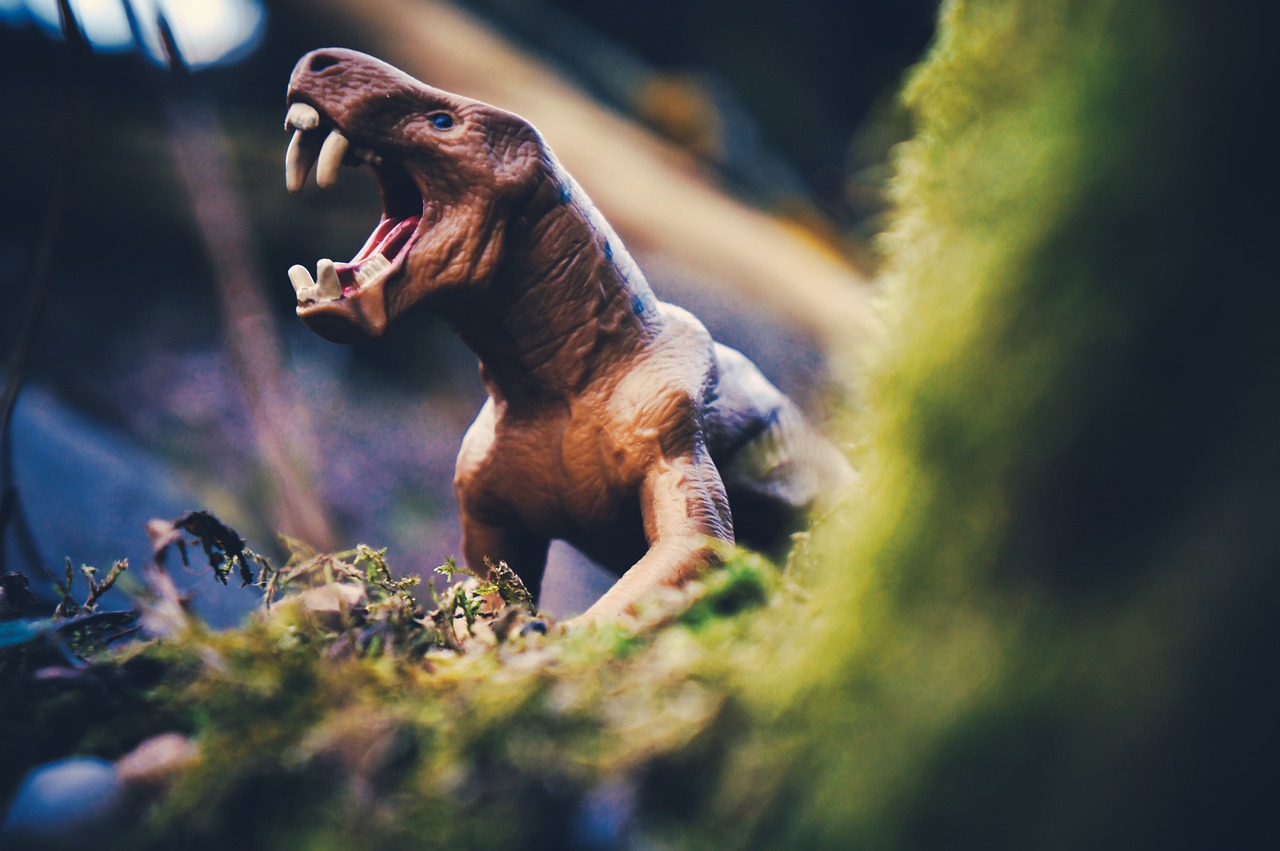
Collaboration with Scientists
Mary Anning's journey in paleontology was not a solitary endeavor; she was a crucial figure in a network of scientific collaboration that spanned the early 19th century. Anning's work attracted the attention of prominent geologists and paleontologists, who recognized her remarkable talent for fossil hunting and her keen eye for detail. One of her most significant collaborations was with Richard Owen, a renowned anatomist and paleontologist. Owen is best known for naming and describing the first dinosaur, but his relationship with Anning was equally impactful. He appreciated her findings and often sought her expertise, which helped bridge the gap between amateur and professional paleontology.
These collaborations were not just about sharing discoveries; they were instrumental in shaping the scientific discourse of the time. Anning's fossils provided critical evidence that supported evolving theories about prehistoric life and the Earth's history. The scientific community was beginning to understand that fossils were not merely curiosities but vital pieces of a larger puzzle regarding evolution and extinction. Anning's meticulous work and her ability to communicate her findings to established scientists allowed her to play a pivotal role in these discussions. Her insights into stratigraphy—the study of rock layers—were particularly valuable as they helped scientists construct a timeline of geological history.
Despite the prevailing attitudes of the time, which often marginalized women in science, Anning's collaborations began to shift perceptions. She was frequently invited to present her findings and contribute to scientific discussions, which was a testament to her growing reputation. However, it is essential to acknowledge that her contributions were often overshadowed by her male counterparts. Anning's name was rarely mentioned in scientific papers, and her role in significant discoveries was often minimized. Yet, her influence cannot be understated; she was a trailblazer who paved the way for future generations of paleontologists.
In addition to her work with Owen, Anning collaborated with other notable figures, including Henry De la Beche and Thomas Hawkins. Their partnerships were characterized by mutual respect and admiration for Anning's expertise. For instance, De la Beche even created a famous illustration of Anning's ichthyosaur, which helped popularize her work and brought greater attention to her contributions. This collaboration not only advanced scientific understanding but also highlighted the importance of teamwork in the pursuit of knowledge.
As we reflect on Anning's collaborations, it's clear that her legacy is intertwined with the scientific community of her time. The relationships she fostered were not merely professional; they were built on a shared passion for uncovering the mysteries of the past. Anning's ability to connect with prominent scientists allowed her to elevate her work and gain recognition, even if it took years for her to receive the accolades she truly deserved. The impact of these collaborations continues to resonate in the field of paleontology today, as they exemplify the power of collaboration in scientific discovery.
- What were Mary Anning's most significant contributions to paleontology?
Mary Anning is best known for her discoveries of the ichthyosaur and plesiosaur, which provided crucial insights into marine reptiles and the evolution of vertebrates. - How did Mary Anning's collaborations influence her work?
Her collaborations with prominent scientists like Richard Owen helped validate her findings and contributed to the broader acceptance of paleontology as a scientific discipline. - Why was Mary Anning's work initially overlooked?
Despite her significant contributions, Anning faced gender biases in the scientific community, which often overshadowed her achievements. - What is Mary Anning's legacy today?
Today, Mary Anning is recognized as a pioneering figure in paleontology, with ongoing efforts to honor her contributions and promote her story in science.

Impact on Geological Studies
Mary Anning's contributions to paleontology were not confined to the realm of fossil discovery; they significantly influenced geological studies as well. Her meticulous work in the Jurassic marine fossil beds of Lyme Regis provided a treasure trove of information that helped shape the understanding of Earth's geological history. Anning's findings were pivotal in establishing the concept of stratigraphy, which is the study of rock layers and layering (strata). This concept is crucial for understanding the chronological sequence of geological events.
One of the most remarkable aspects of Anning's work was her ability to correlate the fossils she discovered with specific stratigraphic layers. By doing so, she not only demonstrated that different layers of rock contained distinct types of fossils but also illustrated how these layers related to different periods in Earth's history. This was groundbreaking at a time when the field of geology was still in its infancy. Anning's fossils served as critical evidence for geologists attempting to piece together the timeline of our planet.
For instance, her discovery of the ichthyosaur and plesiosaur fossils allowed scientists to understand that these creatures lived during the Mesozoic Era, a time when dinosaurs roamed the Earth. This was a pivotal moment in geological studies, as it provided a clearer picture of the evolutionary timeline and the environmental conditions of the past. Her work exemplified how paleontology could inform geological theories, and it laid the groundwork for future studies in both fields.
Moreover, Anning's collaboration with prominent geologists of her time, such as Richard Owen, further amplified her impact. Owen, well-known for coining the term 'dinosaur,' recognized the significance of Anning's discoveries. Together, they explored the implications of her findings, which helped to solidify the relationship between paleontology and geology. Their partnership highlighted the importance of interdisciplinary collaboration in advancing scientific knowledge.
In summary, Mary Anning's work was instrumental in bridging the gap between paleontology and geology. Her discoveries not only enriched the fossil record but also provided essential insights into the geological timeline. Anning's legacy continues to resonate today, as modern geologists and paleontologists build upon the foundation she laid. Her story serves as a reminder of the power of observation and the importance of recognizing the contributions of those who have paved the way for future generations.
- What was Mary Anning's most significant discovery?
Mary Anning is best known for her discovery of the ichthyosaur and plesiosaur fossils, which were groundbreaking in the field of paleontology.
- How did Mary Anning influence geological studies?
Anning's meticulous work in stratigraphy helped establish a clearer understanding of Earth's geological history and the chronological sequence of events.
- Did Mary Anning receive recognition during her lifetime?
While Anning faced significant challenges and skepticism, her contributions have gained recognition in recent years, highlighting her crucial role in paleontology and geology.

Legacy and Recognition
Despite the challenges she faced during her lifetime, Mary Anning's legacy is now celebrated and acknowledged as a cornerstone of paleontological studies. In an era when women were often overlooked in scientific fields, Anning's remarkable contributions have gained recognition that reflects her pivotal role in shaping our understanding of prehistoric life. Today, her name is synonymous with groundbreaking discoveries and relentless pursuit of knowledge, illustrating how passion and perseverance can overcome societal barriers.
In recent years, there has been a significant movement to honor Anning's achievements. Various institutions and organizations have taken steps to ensure her story is told, including:
- Renaming geological features in her honor, such as the Anning Cliff.
- Establishing educational programs that highlight her contributions to science.
- Creating documentaries and literature that explore her life and work.
Furthermore, Anning's influence extends beyond the realm of paleontology. She has become a symbol of female empowerment in science, inspiring countless women to pursue careers in fields traditionally dominated by men. The rise of initiatives aimed at promoting women in STEM (Science, Technology, Engineering, and Mathematics) can be traced back to trailblazers like Anning, who broke through barriers and paved the way for future generations.
Additionally, her impact on the scientific community is evident in the way her findings continue to be referenced in contemporary research. Paleontologists and geologists alike recognize the importance of Anning's work in understanding the history of life on Earth. Her meticulous collection and documentation of fossils have provided a wealth of information that has been built upon by subsequent scientists. In fact, many modern paleontological studies still draw upon the foundational knowledge that Anning established, emphasizing her lasting influence.
In summary, Mary Anning's legacy is one of resilience and brilliance. As we continue to explore the depths of our planet's history, we owe a debt of gratitude to this remarkable woman who dared to challenge the norms of her time. Her story serves as a reminder that true passion knows no bounds and that the pursuit of knowledge can indeed change the world.
Q: Why is Mary Anning considered a pioneer in paleontology?
A: Mary Anning is considered a pioneer because her discoveries, particularly of the ichthyosaur and plesiosaur, were groundbreaking and significantly advanced the scientific understanding of prehistoric marine life.
Q: What challenges did Mary Anning face as a female scientist?
A: Anning faced considerable skepticism and discrimination due to her gender, which often limited her opportunities for recognition and collaboration within the male-dominated scientific community of her time.
Q: How is Mary Anning's legacy being honored today?
A: Anning's legacy is being honored through various initiatives, including educational programs, geological feature naming, and increased visibility in literature and media that celebrate her contributions to science.
Frequently Asked Questions
- Who was Mary Anning?
Mary Anning was a pioneering English paleontologist in the early 19th century, renowned for her groundbreaking discoveries of marine fossils, including the ichthyosaur and plesiosaur. Her work laid the foundation for modern paleontological studies and significantly advanced our understanding of prehistoric life.
- What were Mary Anning's key discoveries?
Anning is best known for her remarkable fossil finds, particularly the first complete ichthyosaur skeleton discovered in 1811 and the first complete plesiosaur skeleton found in 1823. These discoveries revolutionized the field of paleontology and provided critical insights into the evolution of marine reptiles.
- How did Mary Anning's work impact the scientific community?
Despite facing skepticism and challenges due to her gender, Anning's discoveries gradually gained acceptance within the scientific community. Her findings contributed to the development of geological time scales and influenced the understanding of vertebrate evolution, showcasing the importance of her contributions in paleontology.
- What challenges did Mary Anning face as a female scientist?
Mary Anning encountered significant obstacles in her career, primarily due to the male-dominated nature of the scientific community at the time. She often faced skepticism regarding her findings and struggled for recognition, but her perseverance eventually led to increased acknowledgment of her work.
- Did Mary Anning collaborate with other scientists?
Yes, Anning collaborated with several prominent geologists and paleontologists, including Richard Owen. These collaborations were instrumental in advancing the field of paleontology and helped to validate her discoveries, further establishing her legacy in the scientific community.
- Why is Mary Anning's legacy important today?
Mary Anning's legacy is crucial as it highlights the contributions of women in science, particularly in fields like paleontology where they have historically been underrepresented. Her work continues to inspire new generations of scientists and paleontologists, emphasizing the importance of diversity in scientific research.

